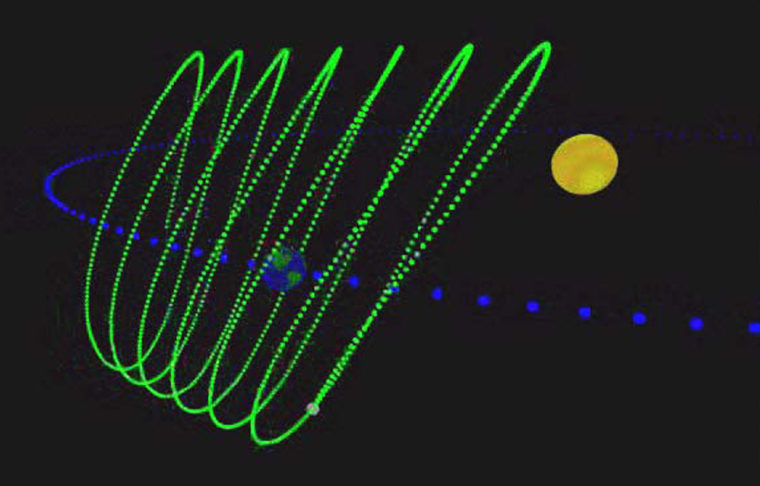An asteroid that has been corkscrewing around Earth in recent years is now heading for deep space, according to NASA.
The object, named 2003 YN107, was discovered in 2003. It arrived in Earth's vicinity in 1999, scientists have calculated. "It's been corkscrewing around Earth ever since." said Paul Chodas of NASA's Near Earth Object Program at the Jet Propulsion Laboratory.
The rock is relatively small and is not a threat to hit the planet.
Most space rocks that approach Earth fly on by.
"We believe 2003 YN107 is one of a whole population of near-Earth asteroids that don't just fly by Earth," Chodas said. "They pause and corkscrew in our vicinity for years before moving along."
These asteroids are called Earth co-orbital asteroids or "co-orbitals." They share Earth's orbit, circling the sun in almost exactly a year. They can catch up to Earth from behind, or Earth can catch them.
"These asteroids are not truly captured by Earth's gravity," Chodas said in a NASA statement issued this week. "But from our point of view, it looks like we have a new moon."
At least four small asteroids behave similarly: and 2001 GO2, 2002 AA29, 2004 GU9 and 2003 YN107. More likely exist but await discovery by improved search technology.
And an object known as Cruithne has been trapped in a suspended state around Earth for at least 5,000 years.
The corkscrew path of 2003 YN107 is lopsided, and on Saturday it dipped within 2.1 million miles (3.4 million kilometers) of Earth, slightly closer than usual, according to NASA. Earth's real moon is 238,900 miles (384,472) miles away.
Earth's gravity then gave the asteroid a nudge to send it on its way.
In about 60 years, 2003 YN107 will lap Earth again, resuming its role as a temporary, corkscrewing moonlet.
